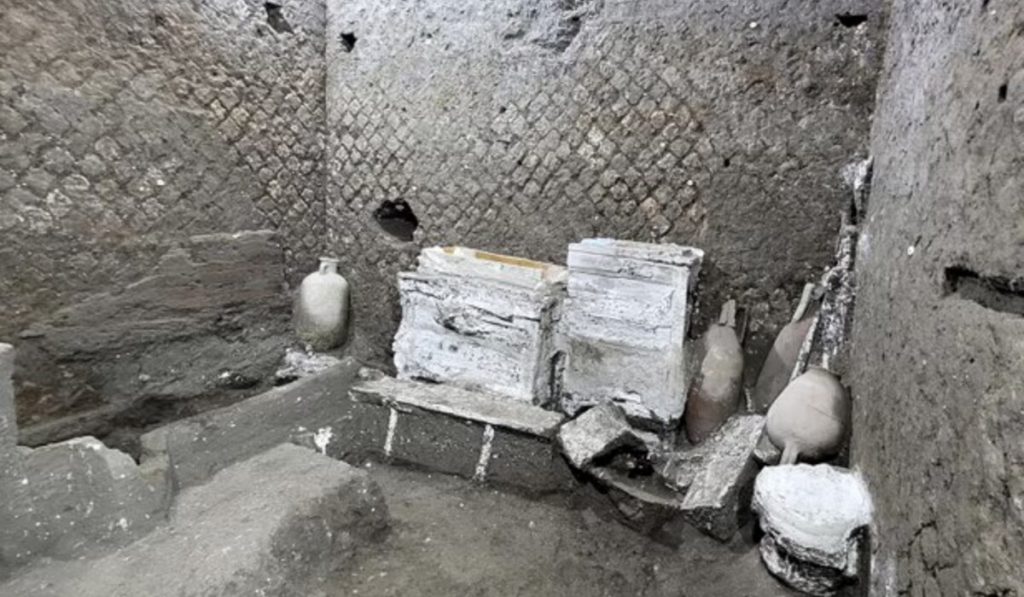In a significant revelation, Italy’s culture ministry announced on Sunday that archaeologists have made a noteworthy discovery near Pompeii, uncovering a modest chamber within a Roman villa at Civita Giuliana. This newly found room is believed to have been a living space utilized by slaves during ancient times, providing valuable insights into their marginalized existence within society.
The Civita Giuliana villa, positioned approximately 600 meters (about 2,000 feet) north of Pompeii’s walls, succumbed to the catastrophic eruption of Mount Vesuvius nearly two millennia ago, which led to the villa’s obliteration.
Inside the chamber, two beds were identified, with only one boasting a mattress for comfort. Additionally, the room contained two petite cabinets and an array of urns and ceramic vessels. During the excavation process, remains of two mice and a rat were also discovered within the containers.
“These details once again underline the conditions of precarity and poor hygiene in which the lower echelons of society lived during that time,” the culture ministry said in its statement.
There were no traces of grates, locks, or chains to restrain the room’s inhabitants.
“It seems that control was primarily exerted through the internal organisation of servitude, rather than physical barriers and restraints,” said Gabriel Zuchtriegel, the director of the Archaeological Park of Pompeii.
Interestingly, this site’s exploration dates back to the years 1907-1908 when initial excavations were carried out. However, renewed attention was drawn to the Civita Giuliana villa in 2017, as authorities realized that the location was being targeted by illegal looters.
Archaeologists noted that one of the beds suffered damage due to a tunnel that had been created by robbers to gain access to another section of the villa, underscoring the villa’s vulnerability to theft.
The eruption of Mount Vesuvius in AD 79 had cataclysmic consequences, leading to the unfortunate demise of countless Roman inhabitants who were oblivious to the latent power of one of Europe’s largest volcanoes. The eruption enveloped the city in a thick blanket of ash, remarkably preserving numerous structures and residents alike.
Recent years have witnessed a resurgence in archaeological pursuits aimed at combatting the effects of decay and neglect that had plagued the site. This resurgence can be attributed largely to a substantial €105 million (£90 million) initiative funded by the European Union.
Gennaro Sangiuliano, the culture minister, affirmed on Sunday that unwavering dedication to conservation and further research would remain a priority, ensuring that the newfound knowledge continues to enrich our understanding of history.
“What we are learning about the material conditions and social organization of that era opens up new horizons for historical and archaeological studies,” he said.

